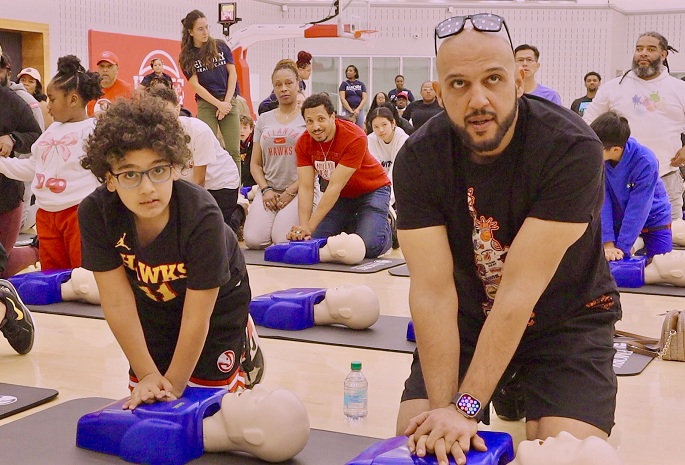Hill: What exactly is prostate cancer?
Carthon: Prostate cancer is the uncontrolled growth of cells from the prostate, a walnut-sized organ that is underneath the bladder. When men get older, the prostate enlarges, but sometimes, those cells can grow uncontrollably and form cancer.
Hill: Who is most at risk for prostate cancer?
Carthon: Several groups are at higher risk for developing prostate cancer – African American men and men with a family history. If a brother, a dad, or an uncle has prostate cancer, that patient would be at an even higher risk. Lastly, there are some groups with relatively higher rates of certain genetic mutations, such as Ashkenazi Jews, that may be at even higher risk for developing prostate cancer.
Hill: Are there prevention steps that people can take to reduce their risk?
Carthon: The first thing is to exercise and eat well, lots of fruits and vegetables. Moreover, we encourage people to talk with their doctors about screenings so that if they are unfortunate enough to have prostate cancer diagnosed, it is captured early.
Hill: What are the warning signs or symptoms that we should be on the lookout for?
Carthon: Well, that’s the tricky part. Sometimes there are no warning signs. But if a gentleman knows that it’s harder to urinate or he needs to urinate more frequently, if he is unable to sleep through the night or notices blood in the urine – those are all warning signs that should prompt a visit to the doctor.
Hill: Who should be screened for prostate cancer?
Carthon: There’s been a lot of back and forth on that, as various agencies have slightly different recommendations. In general, many groups realize that men between the ages of 50 to about 70 may be at average risk and should have a discussion with their doctor before screening for prostate cancer. Some groups, such as African Americans or those with a family history, are at higher risk and should have that conversation even earlier – between the ages of 40 and 45. But once again, it’s a discussion between the patient and his doctor on the benefits and risks of screening.
Hill: What are the methods for screening for prostate cancer?
Carthon: Many people think that the test for prostate cancer is invasive and uncomfortable, but we now often start with a simple blood test. This allows one to detect prostate-specific antigen or PSA. Higher levels of PSA in a man’s blood can make us suspicious about the diagnosis of prostate cancer. Other methods for diagnosis and testing, such as imaging and biopsy, are more involved but they are only done if necessary.
Hill: Once you start getting screened, is it something you should consider having regularly done?
Carthon: Yes, but it really is based on the results from the initial testing. If the test results are very low, men may go every two years for their screening. However, if a number is somewhat high, but not quite high enough to be alarmed, they may have testing more frequently – perhaps once a year.
Hill: What typically happens after someone is diagnosed with prostate cancer?
Carthon: The first thing that we try and tell people is not to panic after diagnosis – there are multiple treatment options. So they may visit with the urologist who does surgical procedures on the prostate. They may also meet with team members like the radiation oncologist, who can use radiation for treatment. They may even meet with a medical oncologist, who uses different medicines to help treat patients with prostate cancer. Moreover, some men with more indolent forms of prostate cancer may be able to safely monitor their disease and decide upon starting treatment once warranted.
Hill: Describe the treatment options for someone diagnosed with prostate cancer.
Carthon: That really depends on the stage of their diagnosis. If someone has a single spot in their prostate, they may be a candidate for localized therapy, such as surgery, radiation, or even ablation using focused energy. If someone has a disease that’s more involved and has spread to the local lymph nodes, they may need combination approaches, such as radiation and the use of hormone therapy. Unfortunately, some men present with advanced disease, and medical oncologists use things such as hormonal therapies, chemotherapy, and immunotherapy to help treat those patients. Recent advances have shown that using a combination of therapies earlier in the course of advanced prostate cancer often leads to better outcomes.
Hill: What are prostate cancer survival rates?
Carthon: What we try to tell people is that no one likes the word “cancer,” and no one likes that diagnosis; however, if caught early, survival rates approach 99%. So we tell patients not to panic. Meet with your care team and see what needs to be done.
You can read more about prostate cancer symptoms, treatment, and screenings at advancingyourhealth.org.






